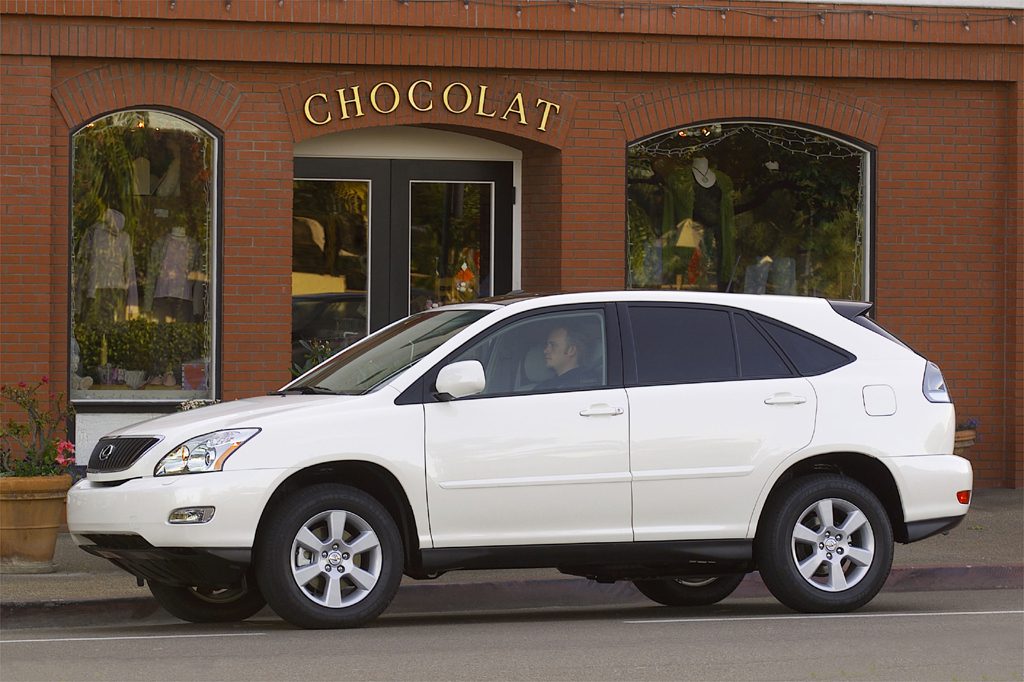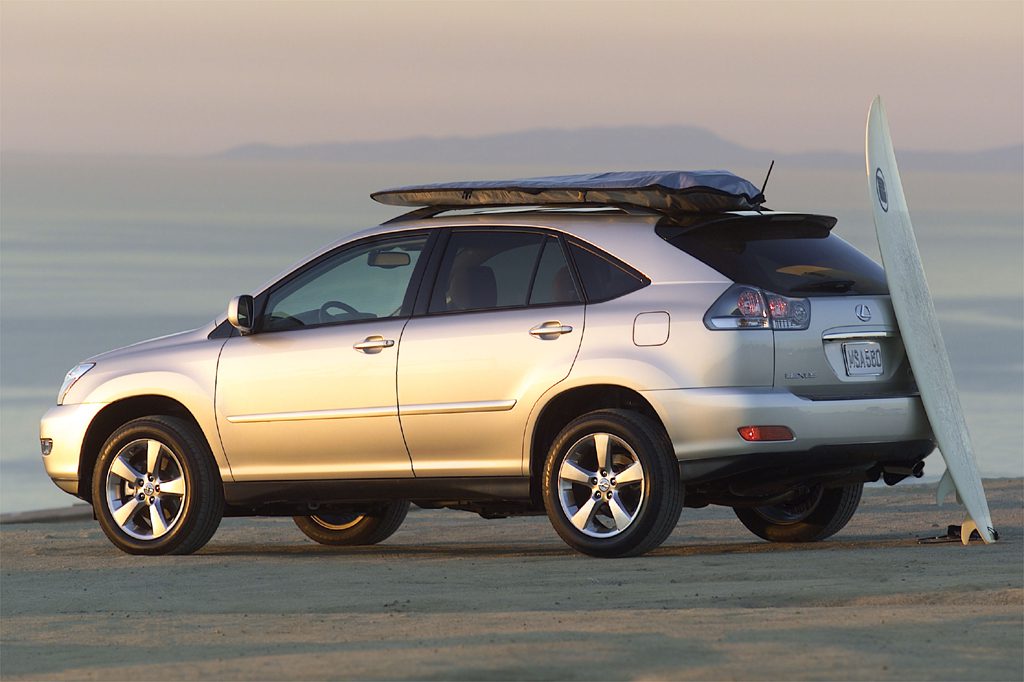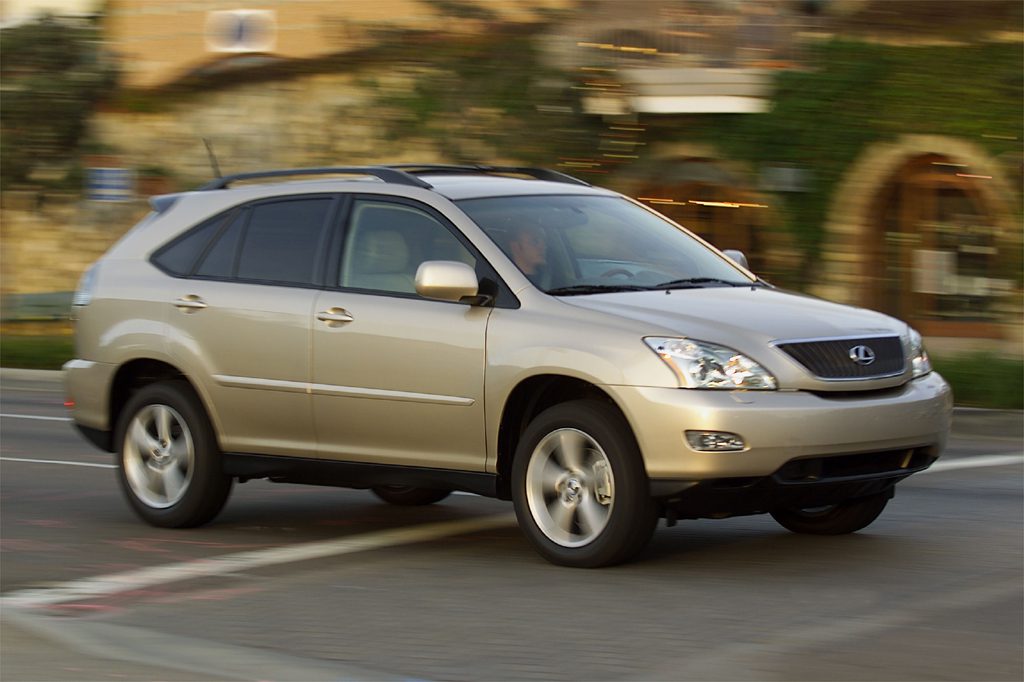| Premium midsize SUV; Built in Japan |
|
|
| Good condition price range: $12,500 – $25,800* |

2004 Lexus RX

2004 Lexus RX

2004 Lexus RX

2004 Lexus RX
| Pros: |
|
| Cons: |
|
The RX 300 spawned many imitators, some of which remain better dollar value in absolute terms. But like the original, the RX 330 and RX 400h quickly earned our Best Buy endorsement for their unexcelled blend of comfort, refinement, luxury, and workmanship. That naturally holds for used examples, which also benefit from Lexus’ strong reputation for reliability, customer satisfaction, and kid-gloves service. Warranties are another asset, and portions should still be in force on these newer vehicles. Your best bet might be an “off lease” RX remarketed through Lexus dealers’ certified pre-owned program. You may pay more than with a private sale, but you get a thoroughly inspected and serviced vehicle with a separate limited warranty-arguably the next best thing to buying new.
Overview
Toyota’s luxury Lexus brand pioneered the “crossover” SUV with the 1999 RX 300. For 2004, the 4-door wagon was redesigned to become the RX 330 with more power, size and features. A gasoline/electric hybrid version, the RX 400h, was added as an early-2006 model.
Like the original RX, the new generation was loosely based on the Lexus ES/Toyota Camry sedan platform, but retained distinct styling, which took on a sportier air with the redesign. At the same time, overall length grew 5.9 inches on a 4-inch longer wheelbase. That put the RX closer in size to Toyota’s Highlander, introduced for 2001 as a lower-priced crossover with more-traditional wagon styling. But where Highlander later offered optional 3-row seating, the RX did not, remaining a 5-passenger model.
The RX 330 name reflected a larger, V6 engine: a 3.3-liter unit with 230 hp, up 10 from the RX 300. The only transmission was a 5-speed automatic, replacing a 4-speed. As before, buyers could choose front-wheel drive or all-wheel drive. The latter again lacked low-range gearing and was not intended for severe off-road use. The RX 400h, Lexus’ first gasoline/electric vehicle, delivered 268 hp with a V6 augmented by three battery-driven electric motors that provided de facto AWD via a continuously variable automatic transmission (CVT). Like Toyota’s hybrid Prius compact car, the 400h could run on either or both of its power sources according to driving demands, with the CVT providing a near-infinite number of drive ratios. No plug-in charging was required, also like the Prius.
Befitting a Lexus, all RX models came with many standard features. Traction/antiskid control, antilock 4-wheel disc brakes and front side airbags were joined by curtain side airbags and a driver’s knee airbag. Also new were a tire-pressure monitor, 17-inch wheels to replace 16s, and a 40/20/40 split rear seat with slide and recline adjustments. The 400h included several features available for 330s. Among them were 18-inch wheels, steering-linked xenon headlamps, leather upholstery, power tilt/telescope steering wheel, and a voice-control navigation system with rearview TV camera. Heated front seats and DVD entertainment were available for all models. Exclusive RX 330 options included a multipanel sunroof, a self-leveling air suspension with driver-selectable height settings, and adaptive cruise control designed to maintain a set following distance.
Yearly Updates
| 2005 RX A power liftgate moved from optional to standard status, and the included power front-passenger seat went from 4-way to 8-way adjustment. The available navigation system added a wireless cell phone connection, plus new graphics for its dashboard screen and a more-detailed database. |
| 2006 RX These models were virtual carryovers as the hybrid 400h took center stage. |
| 2007 RX Conventional-powertrain versions of this SUV got more power for 2007. The RX 350 had a 270-hp V6 and replaced the RX 330, which had a 223-hp V6. |
| 2008 RX The 2008 Lexus RX was largely unchanged. |
| 2009 RX The RX 350 again saw few changes. |
